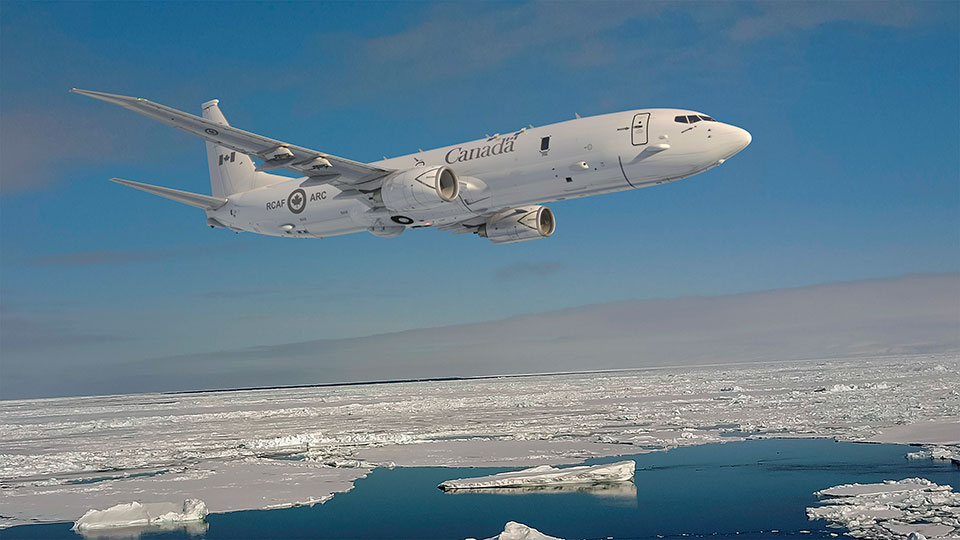The U.S. Navy has awarded Boeing a $3.4 billion contract to commence production of 14 P-8A Poseidon aircraft for the Royal Canadian Air Force, along with an additional three P-8s for the German Navy.
Philip June, the vice president and program manager for the P-8A program, expressed pride in expanding the international P-8 partnership to include Canada and further bolstering Germany’s maritime patrol capabilities. He highlighted the P-8 Poseidon’s track record of over 600,000 flight hours, emphasizing its suitability for meeting the evolving security needs of both countries.
Canada’s decision to replace its existing CP-140 Auroras with the P-8A Poseidon was announced in November 2023, with the first aircraft slated for delivery in 2026. Boeing’s investment in Canada is expected to create over 3,000 jobs annually within Canadian industry and value-chain partners, contributing at least $358 million to the country’s gross domestic product over the next decade.
The Canadian Team Poseidon, comprised of CAE, GE Aviation Canada, IMP Aerospace & Defence, KF Aerospace, Honeywell Aerospace Canada, Raytheon Canada, and StandardAero, builds on the collaboration of 81 Canadian suppliers to the P-8 platform and over 550 suppliers across all provinces, supporting Boeing’s substantial economic impact in Canada.
Vince Logsdon, vice president of International Business Development for Boeing Defense, Space & Security and Global Services, emphasized the P-8’s advanced capabilities in safeguarding national interests, underscoring the significant industrial benefits it brings to Canada and Germany’s aerospace and defense sectors.
In addition to the initial procurement of five P-8 aircraft in June 2021, Germany has increased its order by three more aircraft, bringing the total to eight to replace the aging P-3 Orions. Boeing has partnered with ESG Elektroniksystem-und Logistik-GmbH and Lufthansa Technik in Germany to ensure the highest operational availability for the German Navy’s missions.
Boeing’s collaboration with CAE extends to Canada, Germany, and Norway through teaming agreements aimed at enhancing multi-mission platform collaboration and providing superior training solutions for the P-8A Poseidon program.
Currently, there are 200 P-8s in service or on contract across nine countries, including the United States, Australia, India, United Kingdom, Norway, New Zealand, Republic of Korea, Germany, and Canada.
The P-8A Poseidon is a maritime patrol aircraft based on the Boeing 737-800 airframe and serves as a multi-mission platform capable of conducting a wide range of operations, including anti-submarine warfare (ASW), anti-surface warfare (ASuW), intelligence, surveillance, and reconnaissance (ISR), and search and rescue (SAR) missions.
Key features of the P-8A Poseidon include:
- Advanced Sensors: The aircraft is equipped with a sophisticated suite of sensors, including the AN/APY-10 multi-mission surface search radar, sonobuoys, and magnetic anomaly detectors (MAD), which enable it to detect and track surface ships, submarines, and other maritime threats.
- Weapons Capabilities: The P-8A can carry a variety of weapons, including torpedoes, anti-ship missiles, and depth charges, allowing it to engage and neutralize hostile targets both above and below the surface of the ocean.
- Long Range: With its high fuel efficiency and extended range capabilities, the P-8A can operate over vast distances, providing maritime patrol and surveillance coverage across large areas of ocean. The P-8A Poseidon is capable of flying up to 1,200 nautical miles (2,222 kilometers) from its base of operations, conducting a mission for approximately 4 hours at a typical mission profile. With aerial refueling capabilities, the range can be extended further, allowing for extended endurance and coverage during maritime patrol and surveillance missions.
- Modern Avionics: The aircraft features state-of-the-art avionics and mission systems, including digital displays, communication equipment, and mission planning software, which enable crew members to effectively execute their missions in all weather conditions and environments.
- Multi-Mission Capability: In addition to its primary role as a maritime patrol aircraft, the P-8A can be configured for a variety of secondary missions, including search and rescue, humanitarian assistance, and disaster relief operations.
Image/Source: Boeing

